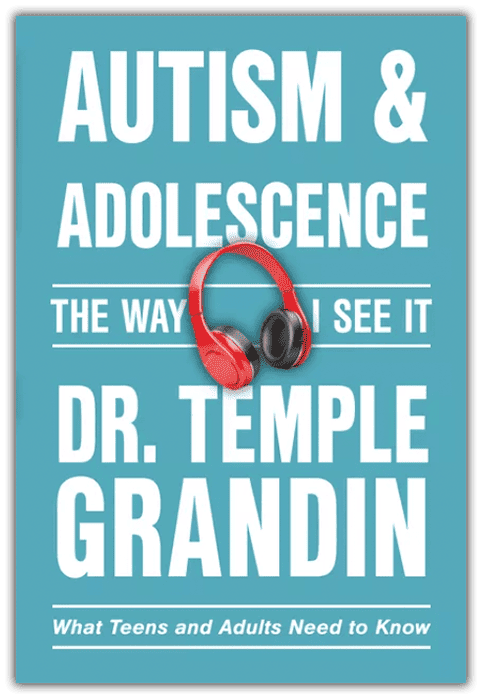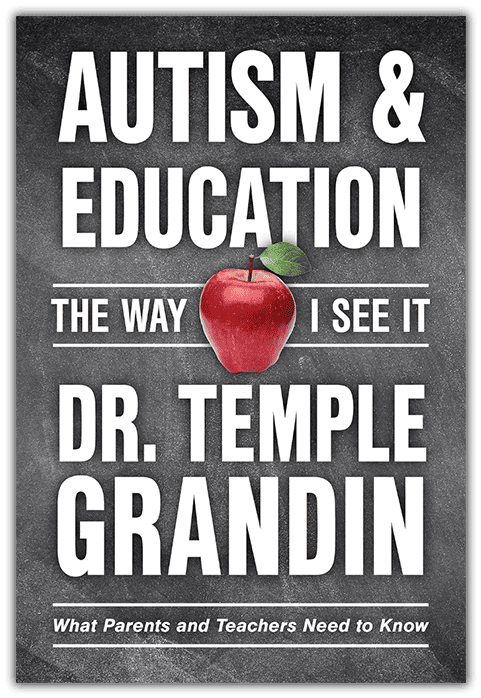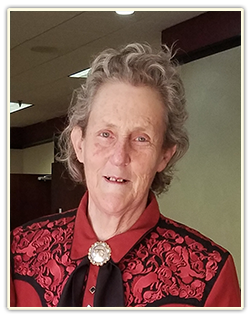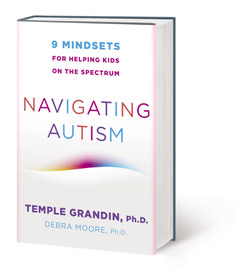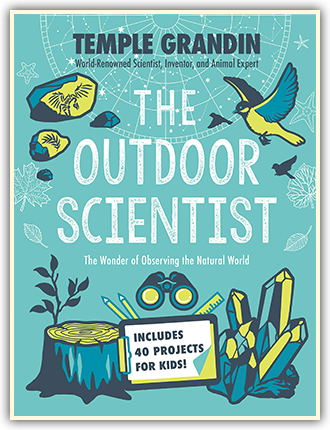
Webinars & Conferences
Upcoming Conferences
July 29 - Aurora, CO
August 14 - Hershey, PA
August 18 - Webinar
August 20 - New Orleans, LA
August 23 - Attica, MI
September 10 - Dallas Forth Worth
September 11 - Knoxville, TN
September 15 - Missoula, MT
September 19 - Cincinnati, OH
November 19 - Memphis, TN
November 20 - Jonesboro, AR
A MUST LISTEN!!
Temple's Latest Books!
Temple Grandin earns Dole Leadership Prize!
NAVIGATING AUTISM
"The Outdoor Scientist"
The Most Fun in the World is Making Stuff
Recently I went to a wonderful Makes Fair called STEAM fest in Boulder, Colorado. STEAM stands for Science, Technology, Engineering, Art, and Math. The emphasis was on making things ranging from high tech robots to building things from low-tech cardboard boxes. There were a number of kids at this event that had autism. They had a great time cutting up large cardboard boxes and making forts. To safely cut heavy corrugated cardboard, tools were made from half a hacksaw blade with a duct tape handle. This creates a mini saw for sawing the cardboard and it is much safer than knives. At another booth, children played with giant blocks made from boxes, which were labeled MineCraft blocks. It was great to see kids who were not glued to a screen. Kids will put the screens away if they have hands-on activities. Many of the high tech robotics activities involved computers but the kids became more interested in making the physical robot do something. They even had booths for doing the same craft projects I did in elementary school. Simple fun stuff like cutting paper snowflakes and building things from popsicle sticks, string, glue, and tape.
For the budding mathematician, they had a cool game for making hundreds of mathematical patterns called FRACTILES. The designs you can make with it are infinite. I would have loved this as a child. My only warning is that it has small pieces so it would not be appropriate for kids who might eat the pieces.
Kids Need To Do Hands-on Things
Children on the autism spectrum sometimes get addicted to video games. Therefore, my advice is to avoid video games and games done on screens as gifts. What I loved about the MAKER Fair is that children were creative and doing things with their hands. It was all about making stuff. Some high tech activities involved computers and screens, but the screen was secondary. The IPhone or IPad was used to control a robot, which is a real physical thing that the kids built. Every parent and teacher should attend a MAKER Fair. It is the most fun a kid can have. There were several hundred kids at the MAKER Fair and NOBODY sat in the corner glued to a screen.
Solving Problems and Learn from Mistakes
A really fun activity was building catapults that threw soft sponge balls. The kids were provided with short pieces of lumber, bungee cords, plastic pans, and lots of duct tape. They had to figure out how to make a catapult and the parents were instructed to let the kids do it. The children doing this activity were mostly in elementary school. Doing this activity enabled kids to learn from their mistakes. If one way fails to work, then you try another. To keep this activity safe, adults watched to prevent use of dangerous materials such as rocks.
As I walked around the MAKER Fair, I observed that the kids were having the most fun with the simple stuff such as cardboard boxes, tape, and scrap wood. Making houses and forts from cardboard boxes was more popular than 3D pictures on a large screen TV. The right hands-on activities where the child is free to create, can pull children away from screens. When I was a child, I was given gifts for making stuff and exploring the world, such as carpentry tools, a toy sewing machine that really worked, and a microscope. The next door neighbor had an Erector Set. We never followed the directions. We just built stuff!
About Temple Grandin
Dr. Grandin did not talk until she was three and a half years old. She was fortunate to get early speech therapy. Her teachers also taught her how to wait and take turns when playing board games. She was mainstreamed into a normal kindergarten at age five. Oliver Sacks wrote in the forward of Thinking in Pictures that her first book Emergence: Labeled Autistic was “unprecedented because there had never before been an inside narrative of autism.” Dr. Sacks profiled Dr. Grandin in his best selling book Anthropologist on Mars.
Dr. Grandin became a prominent author and speaker on both autism and animal behavior. Today she is a professor of Animal Science at Colorado State University. She also has a successful career consulting on both livestock handling equipment design and animal welfare. She has been featured on NPR (National Public Radio) and a BBC Special – "The Woman Who Thinks Like a Cow". She has also appeared on National TV shows such as Larry King Live, 20/20, Sixty Minutes, Fox and Friends, and she has a 2010 TED talk. Articles about Dr. Grandin have appeared in Time Magazine, New York Times, Discover Magazine, Forbes and USA Today. HBO made an Emmy Award winning movie about her life and she was inducted into the American Academy of Arts and Sciences in 2016.
When she was young, she was considered weird and teased and bullied in high school. The only place she had friends was activities where there was a shared interest such as horses, electronics, or model rockets. Mr. Carlock, her science teacher, was an important mentor who encouraged her interest in science. When she had a new goal of becoming a scientist, she had a reason for studying. Today half the cattle in the United States are handled in facilities she has designed.
